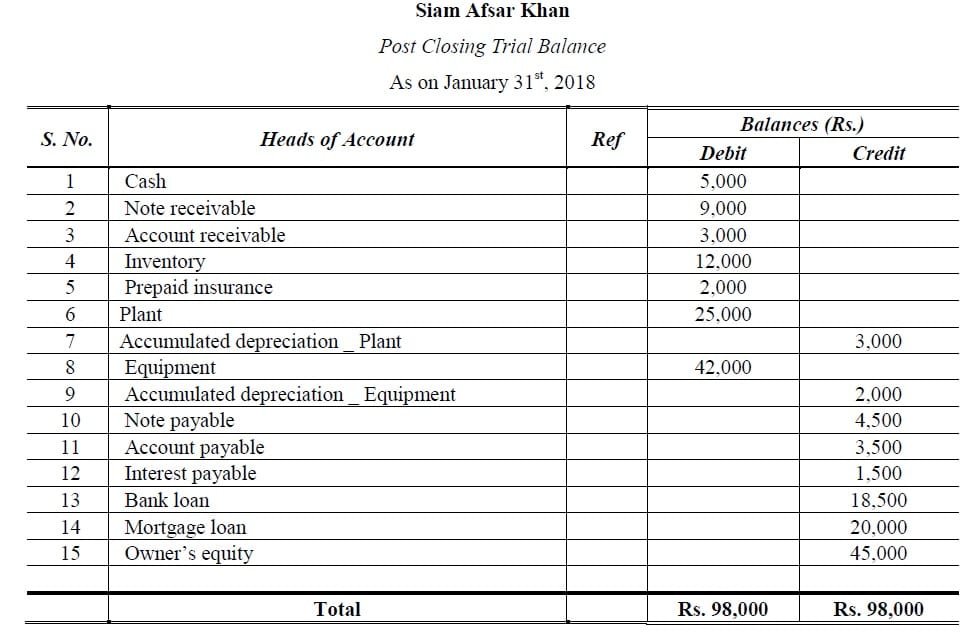Post Closing Trial Balance
Previous Lesson: Closing Entries
Next Lesson: Accounting Worksheet
At the completion of accounting cycle, the last step is the preparation another trial balance known as Post Closing Trial Balance (sometimes called after-closing trial balance or opening trial balance), which shows only permanent accounts titles and their balances after adjusting and closing entries have been passed and posted. This post-closing trial balance helps in checking the accuracy of permanent ledger account balance. It is important to do this checking because so many new postings go to the ledger account from the adjusting entries and closing entries.
The Post Closing Trial Balance is prepared after the completion of adjusting and closing process. It is important to note that only balance sheet (assets, liabilities and owner’s equity) accounts also known as permanent accounts, have balances and are carried forward to the next financial or accounting year. All temporary accounts (revenue, expense, drawing or dividend) accounts begin the new accounting year with a zero balance. The purpose of the after-closing trial balance is to verify the equality of the permanent account balances carried forward into the next accounting period. Since all temporary accounts will have zero balances, the post-closing trial balance will comprise only balance sheet accounts (permanent accounts).
Format for Post closing Trial Balance
The Post Closing Trial Balance format appears below.
At closing day of fiscal year, the business transfers temporary account balances to the permanent owner’s equity account or capital account. Closing entries formally recognize in the ledger the transfer of net profit (or net loss) and owner’s drawings to owner’s equity account. Important to note here that the temporary accounts or nominal account, or (expenses, revenue, income summary, and drawing accounts), which are closed at the end year are not exposed on the post-closing trial balance. Those accounts are not shown because they have zero balances.
References
Mukharji, A., & Hanif, M. (2003). Financial Accounting (Vol. 1). New Delhi: Tata McGraw-Hill Publishing Co.
Narayanswami, R. (2008). Financial Accounting: A Managerial Perspective. (3rd, Ed.) New Delhi: Prentice Hall of India.
Ramchandran, N., & Kakani, R. K. (2007). Financial Accounting for Management. (2nd, Ed.) New Delhi: Tata McGraw Hill.


0 Comments